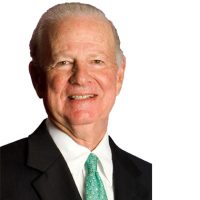A Europe “Whole and Free”
AGI is pleased to present this collection of essays reflecting on the 25th anniversary of German unification in October 2015. We are grateful to those who have contributed to this collection, all of whom have been affiliated with and supported the Institute in many different capacities. These essays leave us with thoughts not only about the past, but also about the future of German-American relations. Be sure to check back throughout the week for additional insights.
On May 31, 1989, a determined U.S. President George H. W. Bush strode to a podium in Mainz, West Germany to explain his vision of what Europe could be like if the Cold War ever ended.
“The passion for freedom cannot be denied forever,” President Bush told West German Chancellor Helmut Kohl and others who gathered for his speech. “The world has waited long enough. The time is right. Let Europe be whole and free.”
At the time, the political chessboard in Germany and across Europe was moving rapidly. Two weeks later, Soviet President Mikhail Gorbachev visited West Germany and declared that the Soviet Union would not disrupt changes already underway among its allied states in Eastern Europe. On November 9, protestors took sledgehammers to the Berlin Wall, tearing down the barrier that had separated friends and family members in the East from those in the West since it was built in 1961. Finally, on October 3, 1990, East and West Germany were reunited after war had divided that country for most of the twentieth century.
The Cold War was over, and since then, President Bush’s goal of a whole and free Europe has become a reality. Just as he had predicted, the benefits of a post-Cold War Europe have been significant to the United States—economically, militarily, and politically.
After having almost 250,000 U.S. troops stationed in West Germany in 1989 and for most of the prior four decades, the United States now has less than 40,000 troops in a united Germany. And the drawdown of U.S. troops across Europe has been almost equally as significant, with the total number less than 65,000. The savings are more than economic for the United States. It gives the U.S. military greater flexibility in deploying its troops across the globe rather than focusing on Europe.
There is another military benefit. The North Atlantic Treaty Organization, established in 1949 with 12 countries, now has 28 member states across all of Europe. It is unquestionably the strongest military alliance in the world, one that can generally be counted on to support American actions not only in Europe, but elsewhere, particularly in the global battle against terrorism. It has also been a solid partner in countering Russian meddling in Ukraine.
Meanwhile, the creation of the European Union when the Maastricht Treaty was signed in 1993 has not only strengthened and integrated Europe as intended (although some problems still exist), it has provided the United States with a critical trade partner. Imports from Europe and exports to Europe have significantly increased since 1989 and now account for 30 percent of global trade. Germany, meanwhile, is the fifth largest trading partner of the United States and the United States is Germany’s fourth largest trading partner. All such trade could increase even more should officials on both sides of the Atlantic hammer out the proposed Transatlantic Trade and Investment Partnership.
Increased trade, of course, has served to strengthen the political alliance between the United States and Europe, an alliance that is among the strongest in the world—and one that should remain so for a very long time.
Since 1989, hundreds of millions of people around the world once ruled by tyranny now live under democratic governance. In 1989, there were 69 electoral democracies in the world. Today, there are 117. Although some of those new democracies continue to have problems, and there has been some backsliding in recent years, the spread of freedom across the globe has been one of the biggest developments for good in the past century.
Further, the world today is free from the fear of nuclear annihilation that people lived with daily during the Cold War. It may be hard for some today to comprehend that fear, but it was very real. Today, of course, we must be diligent that rogue actors don’t acquire a nuclear weapon. But the threat that the world will perish in a hail of fiery atoms is virtually non-existent.
What will the future hold for U.S.-Europe relations? Nothing in the world remains static. There are always changes in relationships as history unfolds. As the United States continues to deal with its obligations as both an Atlantic and Pacific power, there will continue to be concerns about erosion of the transatlantic partnership.
In the long run, however, I continue to believe that this relationship will remain strong and healthy if for no other reason than that it is in the best interest of all members of this alliance. The United States without its European partners is not as strong. And the same goes for Europe without its American partner.
Perhaps President Bush expressed this best near the end of his speech in Mainz 26 years ago. “The foundation of lasting security comes not from tanks, troops or barbed wire; it is built on shared values and agreements that link free peoples.” The transatlantic partnership is built and sustained first and foremost on those shared values and agreements.
James A. Baker, III was the 61st U.S. Secretary of State from 1989 to 1992. He is an honorary Trustee of AGI.









